Presenter: Sandra Haire, Haire Laboratory for Landscape Ecology Determining the effects of land management on fire regime characteristics is complicated by the interaction of several factors that vary in space and time. First, fire size and frequency are linked to climate conditions, including drought, as well as wind and temperature that define weather conditions during …
Read more “May 15, 2013: The Structure of Fire Size Distributions: A Broad View of Interacting Gradients in Wilderness Management, Spatial Climate, and Topography in Three Western Regions”
250513_Watershed Restoration White Paper-2
General SWFSC Handout April 2015 What is the Southwest Fire Science Consortium? General SWFSC information sheet from April 14, 2015
250513_Watershed Restoration White Paper
Participant Comments on BALN Workshop Posted participant recommendations and comments from the Burned Area Learning Network workshop April 16-17, 2015
Track Fire Field Trip Notes Track Fire Field Trip Notes Compiled by Cori Dolan September 27, 2012
General SWFSC Handout What is the Southwest Fire Science Consortium? Oct. 27, 2017 PDF
General SWFSC Handout What is the Southwest Fire Science Consortium? With upcoming events. August 28, 2017
The Southwest Fire Science Consortium (SWFSC) gets emerging science on the ground by connecting scientists, land managers, and the public. By facilitating these connections, the SWFSC helps to assure that scientists are addressing the most pressing questions and managers are applying cutting-edge science and diverse knowledge in their efforts to protect communities and critical natural …
Read more “Mission”
This will be a panel presentation followed by a question/answer and discussion, approximately 90 minutes in length Assessing and analyzing mixed conifer spatial patterns of northern Arizona (Kyle Rodman) Effects of tree cutting and fire on understory vegetation in mixed conifer forests (Judy Springer) Treatement effectiveness of mixed conifer treatments in the Wallow Fire (Amy Waltz) Overview …
Read more “November 10, 2015: Mixed Conifer Forest Ecology: Emerging Science”
